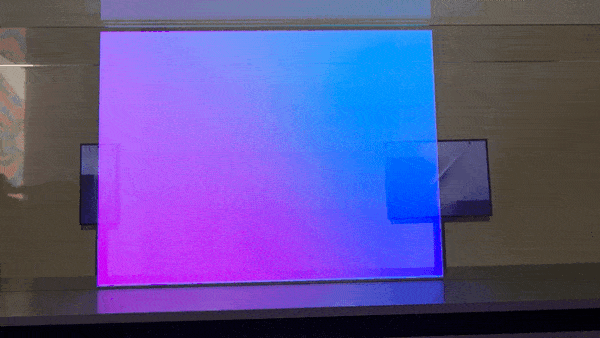Samsung is preparing to introduce an entirely new chapter in smartphone design. The company’s first tri-folding device—tentatively called the Galaxy Z Tri-Fold—will debut in Korea on December 5, marking one of the most ambitious shifts in mobile form factors since the first foldables arrived six years ago.

A Double-Fold Design That Opens Into a 10-Inch Display
After years of prototypes and patent filings, Samsung’s experiment with a dual-hinge structure is finally becoming a commercial product. Industry officials say the Tri-Fold unfolds into a tablet-like display of roughly 10 inches, then folds twice into the footprint of a conventional smartphone.
The device first appeared publicly at the APEC 2025 K-Tech Showcase, drawing attention for its unexpectedly refined build. That early buzz has accelerated Samsung’s move toward mass production—and raised expectations for what may be the company’s most daring hardware release in years.
A Near-₩4 Million Price Tag Reflects Its Technical Complexity
Samsung is expected to price the device in the upper 3-million-won to low 4-million-won range, reflecting the added costs of reinforcing a panel that bends twice, plus upgraded hinges, durability treatments, and structural materials.
The phone is likely to run on Qualcomm’s Snapdragon 8 Elite processor. Its camera system mirrors the Galaxy Z Fold 7 lineup, including a 200-megapixel main sensor, a 10-megapixel telephoto lens, and a 12-megapixel ultra-wide shooter—suggesting Samsung wants the Tri-Fold to perform as both a flagship camera phone and a productivity device.

Korea First, Asia Next—But Global Expansion Remains Uncertain
Samsung plans to begin sales in Korea, then expand to major Asian markets including China and Singapore. Launch plans for North America and Europe remain undecided, with supply constraints and production yield believed to be major factors. Analysts say limited initial stock could turn the Tri-Fold into something of an “early-adopter edition.”
A New Category After the Z Fold and Z Flip
The Tri-Fold represents Samsung’s first entirely new foldable category since 2019. Unlike the single-hinge Z Fold or the clamshell-style Z Flip, the new model aims to merge smartphone portability with tablet-grade functionality—an evolution that industry experts describe as Samsung’s attempt to “break through the growth ceiling of the foldable market.”
Durability Questions Remain—But the Symbolism Is Significant
A dual-fold system dramatically increases engineering difficulty, and concerns remain around hinge longevity, display creasing, device weight, and battery efficiency. Those issues may become decisive once the device lands in the hands of everyday users.
Even so, the arrival of Samsung’s Tri-Fold is widely seen as a symbolic turning point—evidence that foldable technology is maturing and branching into new structural possibilities. For Samsung, the product is more than a phone; it’s a statement that the race for the next-generation form factor has officially begun.
Ju-Baek Shin | jbshin@kmjournal.net
- Samsung Galaxy S26 Ultra: Why the Punch Hole Got Bigger...A Deep Dive into Samsung’s New Strategy
- NVIDIA Secures HBM4 Samples from Samsung and SK hynix
- Samsung Electronics Launches Galaxy A17 LTE...Affordable Smartphone Equipped with AI
- Samsung Unveils Galaxy XR, Its $1,799 ‘Project Moohan’ Headset
- [CultureTech] Will Galaxy XR Open a New Landscape for Entertainment?
- Motorola Shakes Up Europe’s Foldable Market as Samsung–Honor Duopoly Falters
- Samsung Opens the 2026 Foldable Battle… “Ultra-Slim, Ultra-Light Flip Will Rewrite the Market”
- Samsung Faces Record AP Procurement Costs as Exynos Becomes Its Best Lifeline
- Samsung Puts AI in the Palm of Your Hand

![[동학] 카카오톡 친구탭, 결국 12월 롤백… “격자형 피드는 선택 옵션으로”](https://cdn.kmjournal.net/news/thumbnail/custom/20251126/5517_10550_1119_1763853080_120.jpg)


![[테크 칼럼] 제미나이3, GPT-5.1을 넘다…AI는 이제 ‘일을 대신하는 시대’로 간다](https://cdn.kmjournal.net/news/thumbnail/custom/20251126/5457_10454_4847_1763621329_120.jpg)



![[낭만 테크 시대] AI 대항해 시대](https://cdn.kmjournal.net/news/thumbnail/custom/20251126/5603_10714_4334_1764121414_160.jpg)

